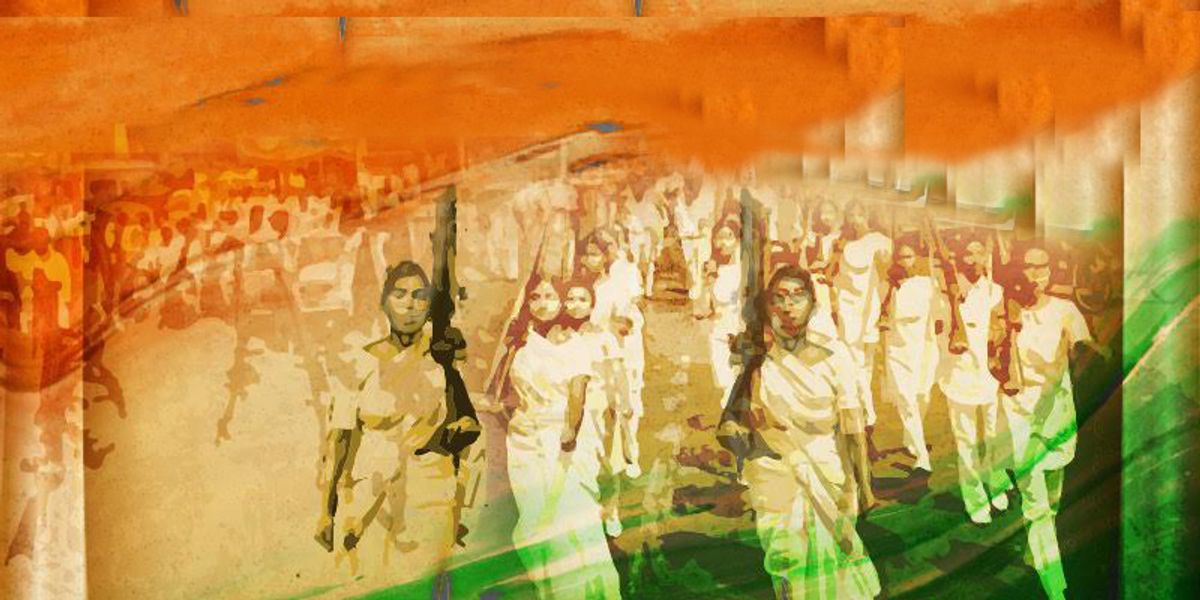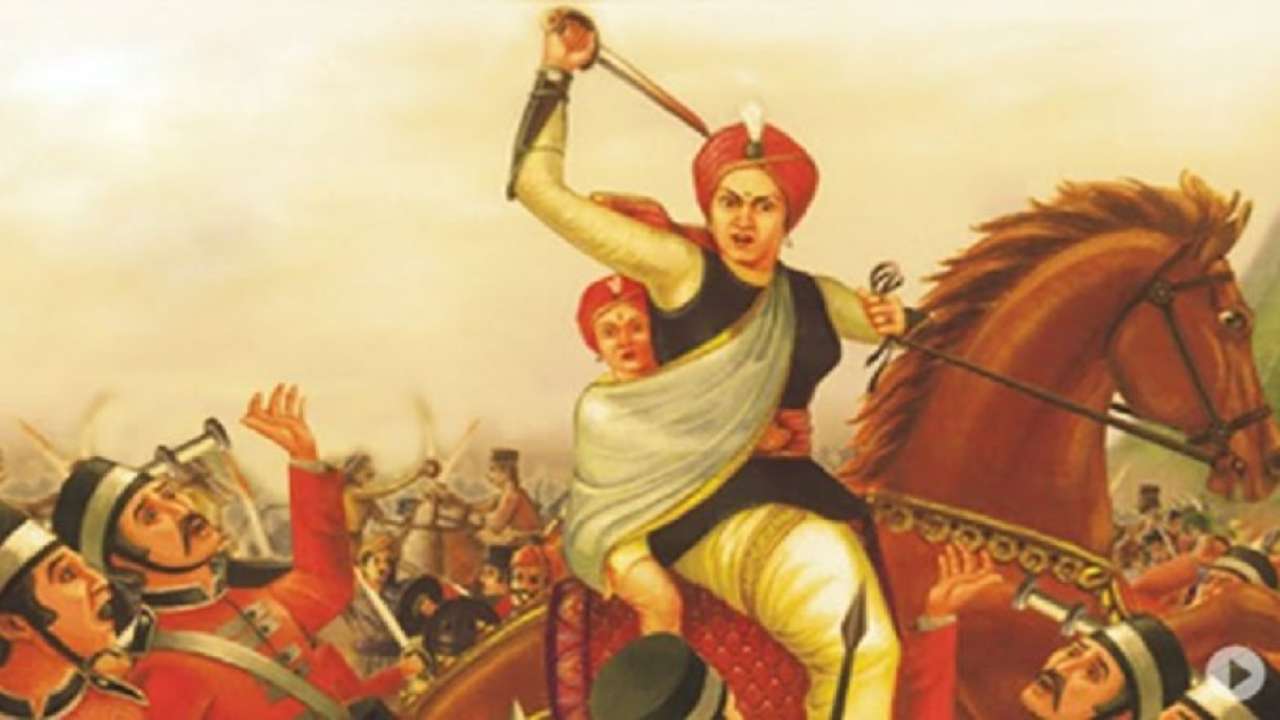“My great grandfather was a very active part of the Indian freedom struggle, its rallies, and movements. So much so that he was arrested amidst the famous Quit India Movement. During this time, my great-grandmother would go and meet him, handle the legal formalities, take care of their children and cover for him in public forums. By the time my great grandfather was out of jail, my great grandmother had herself become a freedom fighter. Yet, until today, she is only seen as the wife of the freedom fighter.”
The aforementioned narrative emphasises on the role of an unrecognised woman in the freedom struggle instead of continuing the glorification of the said freedom fighter. This beautifully exemplifies how oblivious the masses have been to the role of women in the fight for independence. Nevertheless, the fact remains that women played an enormous and crucial role in this fight.
Women’s role in the freedom struggle can be categorised as direct and indirect. It is imperative to understand that indirect involvement simply means participating in the struggle in a way in which it cannot be seen on the foreground, even though it is as important (even more so in some cases) as the more obvious and direct events happening within the same context.
One very obvious instance of their indirect participation is the way women picked up the pieces after their husbands or fathers (the freedom fighters) were imprisoned or killed. Not only did they look after the household, but they also took on the “man’s role” of handling finances, participating in the struggles, and so on.

Fortunately for the country, the tale of their indirect involvement in the struggle does not end there. When one talks about the Swadeshi Movement, the focus generally remains on the fact that British imported goods were boycotted and Indian goods, products, and clothes were promoted to show non-cooperation and oppose British rule.
What one fails to see is that women formed the majority of consumers of the goods in question. The boycott of western cosmetics (which, at that time, included basic makeup products, glass bangles, and perfumes), and a variety of clothes, both of which dominated the western markets, were facilitated by women. In a way, the Swadeshi Movement was brought to life by women.
A good number of women participated in rallies, raids and stone picketing during the Civil Disobedience Movement and Dandi Salt March in 1930. In the Quit India Movement of 1942, Usha Mehta set up a radio transmitter to spread the famous slogan, “Do or Die” until she was arrested. The dissemination of such information is crucial at times of such national activism: it functions as the glue that unites all the simultaneous activism in different regions under the umbrella of one movement, making it larger and more powerful. Thus, Usha’s contributions have a larger bearing than credited, much like other women’s indirect participation. Whether direct or indirect, women’s participation became so overwhelming by the 1940s that they came to be known as “the disciplined soldiers of Indian freedom”
In fact, on 16th October 1905, which was the Swadeshi protest day, the mode of protest was not lighting stoves i.e. chulhas. Not cooking was the mode of protest that, again, stemmed from women. Additionally, many women gave up their jewelry to fund the movement. While this is the story of women residing in the region of and around Bengal in the 1900s, women all over India; in different timelines, have contributed heavily to the struggle in similar and strikingly different indirect ways; ways without which independence would have been impossible. Needless to say, women’s indirect participation is quite interesting and thought-provoking.
The instances of direct participation of women in the freedom struggle start all the way back from 1817, when women such as Bhima Bai Holkar, Rani Chennama of Kittur, and Rani Begam Hazrat Mahal of Avadh fought against the East India Company even before the First War of Independence in 1857.
Rani Laxmibai was the heroine of the First War of Independence, shaking the entire British Army with her endless courage, bravery and patriotism. Fast forward to 1920, many women such as Sarla Devi, Susheela Nair, Kasturba Gandhi and Kamla Nehru participated in the Non-Cooperation Movement. In fact, Lado Rani Zutshi and her daughters, Manmohini; Shyama and Janak, led the Movement in Lahore.

A good number of women participated in rallies, raids and stone picketing during the Civil Disobedience Movement and Dandi Salt March in 1930. In the Quit India Movement of 1942, Usha Mehta set up a radio transmitter to spread the famous slogan, “Do or Die” until she was arrested. The dissemination of such information is crucial at times of such national activism: it functions as the glue that unites all the simultaneous activism in different regions under the umbrella of one movement, making it larger and more powerful.
Thus, Usha’s contributions have a larger bearing than credited, much like other women’s indirect participation. Whether direct or indirect, women’s participation became so overwhelming by the 1940s that they came to be known as “the disciplined soldiers of Indian freedom”.
The objective of this essay is not just to highlight the role of women in the Indian freedom struggle but to address some serious concerns regarding their mention in our narratives. This is not to say that the country is blind to their contributions, but to say that the prevailing idea that women’s sacrifices mark their contributions is to deflate the intensity of what they had poured into the struggles
As the fog around women’s role in India’s independence struggle slowly lifts, some interesting facts come to light. Circling back to the legend of Rani Laxmibai, the woman who fearlessly fought against the Britishers after the death of her husband, the tales of her valour have been beautifully written out in a famous poem by Subhadra Kumari Chauhan. A snippet from this has been presented below:
“बदंुेलेहरबोलों के मँहु हमनेसनु ी कहानी थी,
खबू लड़ी मर्दा नी वह तो झाँसी वाली रानी थी।”
Here, the word that stands out is ‘mardani’. The fact that this woman fought bravely in the face of danger while suffering loss has been reduced to fighting like a man or fighting in a manly way. Modern day arguments such as ‘cry like a girl’ and ‘punch like a man’ come to mind when one reads this carefully.
In other words, the implication that fighting fearlessly is not in the feminine nature and needs to be drawn out as masculine is somewhat outrageous. Moreover, it indirectly credits men with the badge of bravery along with Rani Laxmibai. One must note that this poem is taught in classrooms and almost every kid in India knows this particular snippet by heart.
It is so deeply instilled that one does not deeply ponder on it. However, this instance, in its mysterious ways, points towards the implication that brave freedom fighters are either men or manly, subtly boxing the narrative of the Indian freedom struggle to its male-dominated starting point.
The objective of this essay is not just to highlight the role of women in the Indian freedom struggle but to address some serious concerns regarding their mention in our narratives. This is not to say that the country is blind to their contributions, but to say that the prevailing idea that women’s sacrifices mark their contributions is to deflate the intensity of what they had poured into the struggles.
The narratives of women freedom fighters take a backseat as the limelight sits on the brave male freedom fighters. Even though tales such as those of Rani Laxmibai are celebrated, the stories of wives of freedom fighters who took over for them; the stories of freedom fighters such as Usha Mehta; the stories of freedom fighters such as those of the aforementioned great grandmother are only heard by a few.
It is time to rethink and reframe the narrative of the Indian freedom struggle as a whole in the light of this question: When Indian independence is the product of the efforts of both brave men and women, why is it that men’s fights, struggles, and legends are seen and talked about more than that of women?
Also read: As We Celebrate Another Independence Day, What Does Freedom Mean To Women And Queer Individuals?
Vanshika is an undergraduate student, pursuing Sociology from Maitreyi College, University of Delhi. She is a curious learner and a passionate writer. She engages with social and legal affairs and wishes to amplify the subtle yet omnipresent issues through her writings
Featured Image Source: iStock




